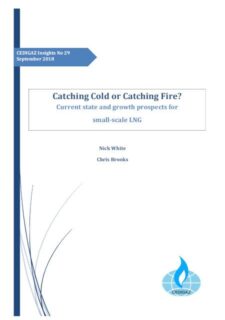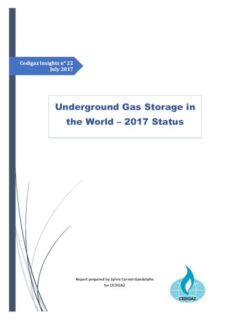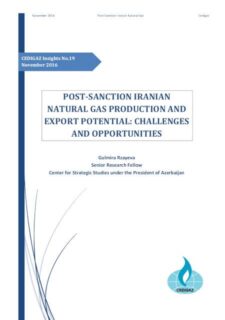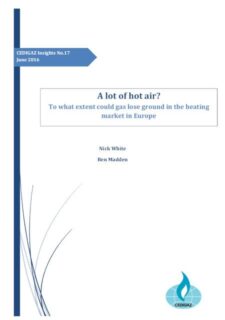CEDIGAZ Insights

Underground Gas Storage in the World - 2024 Status
| Non Member | 1200 € | |
| Member | FREE | Login |
In an era marked by fluctuating energy markets and geopolitical tensions, the importance of underground gas storage (UGS) has never been more pronounced. As the backbone of global gas security, UGS facilities play a critical role in balancing supply and demand, mitigating price volatility, and ensuring a stable energy supply during peak consumption periods. The recent global gas crisis has thrust UGS into the spotlight, prompting accelerated growth and renewed investment in this vital infrastructure.
By the end of 2023, the global working gas capacity of UGS reached 437 billion cubic meters (bcm), a 2% year-on-year increase—the largest since 2015. This surge is primarily due to significant capacity expansions in China, with additional contributions from Europe, Kazakhstan, and Canada. The number of operational UGS facilities globally stood at 681, with China commissioning five new facilities and Saudi Arabia adding its first. The global peak withdrawal rate also increased by 1.6% to 7,516 million cubic meters per day (mcm/d).

East Mediterranean Natural Gas Markets-2023: in Search of Development Pathways
| Non Member | 2000 € | |
| Member | FREE | Login |
Amidst the gas supply crisis aftermath in Europe and with global spot gas prices remaining in the double-digit range for the past years, the EastMed natural gas sector has been attracting growing attention from major producers, investors, and potential gas buyers. With vast reserves amounting to trillions of cubic meters, the EastMed countries hold the potential to bolster their own energy security and expand global gas export capabilities alleviating pressure in the tight gas market.
The latest CEDIGAZ report “East Mediterranean Natural Gas Markets-2023: in Search of Development Pathways” authored by Alexander Kislov and Gina Cohen, presents a thorough analysis of the development of the EastMed natural gas province, examining the most recent advancements in Egypt, Israel, Türkiye, Cyprus, Jordan, and Lebanon, and perspectives of new large-scale gas exports projects. While the future of the EastMed natural gas province is contingent on various factors, the detailed information and complete data presented in the report provide an opportunity to outline the potential outcomes and contours of the EastMed puzzle.
Underground Gas Storage in the World - 2023 Status
| Non Member | 990 € | |
| Member | FREE | Login |
The CEDIGAZ 2023 report highlights significant shifts in the global gas market, with a 1.3% increase in Underground Gas Storage (UGS) capacity, driven by the global gas crisis. Major contributors include China and Europe, with a focus on expanding storage in rapidly developing markets like the Middle East. The report notes a 20% growth in UGS projects in 2022, reflecting the sector's growing importance in natural gas supply security.
The global energy crisis, especially due to Russia's invasion of Ukraine, has reshaped the gas market, leading to more flexible and price-sensitive LNG trade. Governments globally are focusing more on natural gas security, introducing stricter storage regulations and strategic LNG reserves. Japan proposed an international cooperation framework to enhance LNG security.
Europe's RePowerEU plan, a response to Russian aggression, seeks to lessen reliance on Russian fossil fuels, mandating higher gas storage levels. In 2022, storage exceeded EU regulations, reaching 95% by November. Other regions, including Ukraine, the US, China, and the Middle East, are also advancing in UGS, adapting to their specific market needs.

Russian gas in Europe: Yesterday, Today, Tomorrow.
| Non Member | 160 € | |
| Member | FREE | Login |
An in-depth analysis of recent developments and prospects in Europe-Russia gas relations
With quality information from Russia getting increasingly scarce, the Russian natural gas market has become more and more of a black box. In its latest report “Russian gas in Europe: Yesterday, Today, Tomorrow. An in-depth analysis of recent developments and prospects in Europe-Russia gas relations”, CEDIGAZ tracks the unprecedented changes between glorious “yesterday” (2018-2021), gloomy “today” (2022-Q1 2023) of Russian gas (both pipeline and LNG) in Europe, including the evolution of the European countries’ dependence on Russian gas, using data still available. The report also discusses possible futures for Russian gas in Europe after 2023 (“tomorrow”) – given new inputs, including selected pipeline export routes limitations, the Turkish natural gas hub initiative, and Russian LNG project developments.
Russian gas in Europe: Yesterday, Today, Tomorrow - An in-depth analysis of recent developments and prospects in Europe-Russia gas relations. Author: Alexander Kislov – PDF – 55 pages.
GLOBAL BIOMETHANE MARKET 2023 ASSESSMENT + GLOBAL DATABASE - From ambition to action
| Non Member | 1890 € | |
| Member | FREE | Login |
The global biomethane or renewable natural gas industry grew by 23% in 2022 and has potential to surpass 100 billion cubic meters by 2030 with appropriate policies. Energy security concerns, climate change urgency, and methane emission reduction focus have led to new incentivizing policies stimulating investment in the RNG sector. Biomethane is being adopted across sectors worldwide to decarbonize and respond to ESG concerns, and transportation represented half of global demand growth in 2021. The sector has seen unprecedented investment, with European energy majors and financial investors creating dedicated biomethane business units, highlighting biomethane's attributes and exponential growth.

Underground Gas Storage in the World - 2022 Status
| Non Member | 750 € | |
| Member | FREE | Login |
This annual report assesses underground gas storage (UGS) in the world at the end of 2021. It is based and complemented by a comprehensive online database, including detailed statistical information on current and future capacities for the 667 UGS facilities in operation in the world and the 166 UGS projects under construction, planned or potential. Altogether, the database includes 51 countries. The database also includes information on closed, mothballed and inactive UGS facilities, as well as the expansion stages of UGS facilities, when this information is available (see Methodology). The database is available to CEDIGAZ’s members under the infrastructure section of CEDIGAZ website.
This report includes two parts. The first one gives an assessment of UGS capacity at the end of 2021 and new capacity under construction, planned and potential. The second part reviews major trends in UGS in selected key markets: Europe, Ukraine, Russia, the United States, and China. In view of the crucial role of gas storage for security of supply, this review includes an analysis of gas stocks in 2021/22 and winter 2022/23 preparedness. In addition, recent UGS construction activity is reviewed in Central and South America and the Middle East.
This report is based on information available at the beginning of November 2022.

GLOBAL BIOMETHANE MARKET 2022 ASSESSMENT + DATABASE
| Non Member | 1850 € | |
| Member | FREE | Login |

Top 100 Strategic Gas Pipelines
| Member - one license | 9950 € | Login |
| Non member - one license | 9950 € |
- Pipeline ownership – Project structure, shareholders, and their respective shares,
- Technical characteristics – Including pipeline length, diameter, wall thickness and grade of steel used and the pipeline route.
- Pipeline route – Including a bespoke map for each pipeline detailing the route and lengths
- Pipeline construction data – Including CAPEX data relating to the original cost of the pipeline, as well as the cost of subsequent upgrades together with details of the main EPC construction contractors used.

Underground Gas Storage in the World 2021 Status
| Non Member | 500 € | |
| Member | FREE | Login |
This annual report assesses underground gas storage (UGS) in the world at the end of 2020. It is based and complemented by a comprehensive online database, including detailed statistical information on current and future capacities for the 661 UGS facilities in operation in the world and the 91 new projects under construction, planned or potential. Altogether, the database includes 51 countries. The database also includes information on closed, mothballed and inactive UGS facilities, as well as the expansion stages of UGS facilities, when this information is available (see Methodology). The database is available to CEDIGAZ’s members under the infrastructure section of CEDIGAZ website.
This report includes three parts. Due to the exceptional events on the gas (and energy) scene in 2021, this year’s report includes an analysis of the main causes of the elevated European and North Asian spot gas prices (Part 1). Then, the report gives an assessment of UGS key metrics in 2020 and their evolution compared to 2019. The third part reviews major trends in UGS in selected key markets: Europe, Ukraine, Russia, USA, and China. In addition, recent UGS construction activity is reviewed in South and Central America and the Middle East.

Oil and Gas Majors in India: Co-creating the Gas and LNG Market
The entry of big players into the downstream gas market, in partnerships with strong Indian partners, offers a key leverage to the Indian vision to realise a gas market-based economy. They can deliver competitive and affordable LNG supplies and accelerate gas infrastructure build out, thus solving two key bottlenecks on the Indian gas market. Energy majors will facilitate and accelerate gas market growth and enlarge the gas market with innovative solutions adapted to Indian conditions. A larger gas sector augurs well with Indian economy as well as for the environment and is a win-win situation for all stakeholders.
While the COVID-19 crisis has introduced an additional uncertainty to natural gas demand growth, the Indian gas market fundamentals are robust and long-term growth propects remain strong.
IRAN NATURAL GAS
| Non Member | 1200 € | |
| Member | FREE | Login |
Iran has one of the largest proven natural gas reserves in the world, hosts about 17% of the world’s proven natural gas reserves. Iran is also the world’s third–largest dry natural gas producer after the United States and Russia.
This report Dr Sara Vakhshouri founder and president of SVB Energy International and renown specialist of the Iranian energy sector provide an update of Iranian Gas Chain under US sanctions
Contents:- Historical background
- Gas reserves & Exploration
- Development & Production
- Gas Refining & Production at Refineries
- Natural Gas Consumption, Import & Export
- Underground Gas Storage
- Gas Condensate Production
- Implication of US sanctions

Underground Gas Storage in the World - 2019 Status
- At the end 2018, there were 662 underground gas storage (UGS) facilities in operation in the world. The global working gas capacity reached 421 bcm
- North America concentrates more than two thirds of the sites and accounts for almost 40% of global working gas capacity and half of global deliverability, the top five countries (United States, Russia, Ukraine, Canada and Germany) account for 70% of the worldwide capacities
- Storage in depleted fields dominate with 79% of global working gas volumes, but storage in salt caverns now accounts for 26% of global deliverability
- In 2018, the growth in gas storage capacity contrasted with the trends observed since 2015
- At worldwide level, there are 102 identified projects at different stages of planning
- UGS development activity is dominated by China, which alone accounts for almost half of the 37 bcm of working gas capacity under construction

A NEW ERA FOR CCUS DRIVEN BY CONTRASTED POLICIES AND BUSINESS MODELS: US AND EUROPEAN APPROACHES
| Non Member | 990 € | |
| Member | FREE | Login |
Following a period of low activity and weakening interest in recent years, CCUS is back into the limelight, especially in the US and in Europe, in the wake of the Paris agreement, boosted by a growing interest in hydrogen, rising carbon prices, new supporting policies and new business models.
This report provides an update on CCUS globally with a focus on Europe and the US, the two leading areas for this technology.
Contents:- Introduction: CCUS is back on policy makers’ agenda
- Growing policy attention and support for CCUS
- Global status of CCUS
- Barriers, challenges and required policies
- United States: Growing carbon capture & CO2-EOR industry
- Renewed interest and policy support in Europe
- Conclusion

THE IMPACT OF NEW MARINE EMISSIONS REGULATIONS ON THE LNG MARKET
-
- What are the IMO emissions standards coming into force in 2020 and where do they apply?
- What are the possible options for ship owners?
- What are the opportunities for the LNG market?
- Current state of play – how is the industry planning for the 2020 regulations?

BLUE SKIES AND NATURAL GAS IN CHINA

Underground Gas Storage in the World - 2018 Status

The Future of Natural Gas in China and India - Critical Drivers and Challenges

Catching Cold or Catching Fire? Current state and growth prospects for small-scale LNG
| Member | FREE | Login |
| Non Member | 1000 € |

Algeria's potential and challenges, striking the right balance
| Member | FREE | Login |
| Non Member | 1000 € |

South Korea's phase-out of nuclear and coal: what does it mean for the LNG market?
| Member | FREE | Login |
| Non Member | 1000 € |

How will LNG support Kuwait's energy transition?
| Member | FREE | Login |
| Non Member | 1000 € |

Ten major trends in the European gas market

India's vision to a gas-based economy, drivers and challenges

The rise in coal prices: Beijing policy drives EU coal-to-gas switching

Overview of Underground Gas Storage in the World 2017–Status

Does LNG have a long-term future in the United Arab Emirates?

Post COP21 - What does the future hold for gas in Southeast Asia?

Post-Sanction Iranian Natural Gas Production and Export Potential: Challenges and Opportunities

Is China's Golden Agen Of Gas Over Before It Began?

A lot of hot air? To what extent could gas lose ground in the heating market in Europe

Subsidy – blessing or curse? An Assessment of Impact of Gas Price Subsidies on Gas Markets and Consumers

U.S. Natural Gas Update and Outlook

Russian Gas Market: Entering New Era

Waiting for the Next Train? An Assessment of the Emerging Canadian LNG Industry




